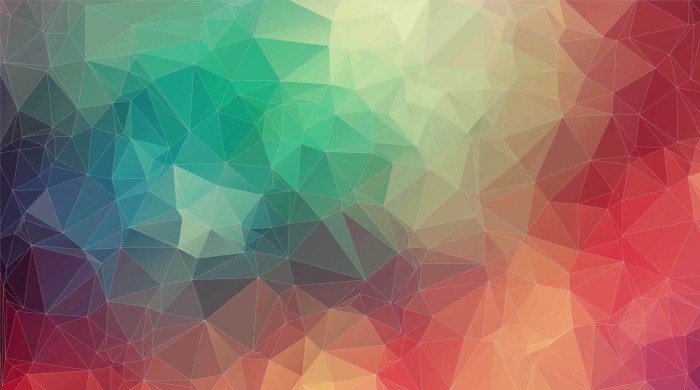Unlocking the Power of Graphic Design: A Comprehensive Guide
With graphic design as the focal point, this guide will delve into the world of visual communication, exploring its impact on various industries and showcasing the creative possibilities it offers. From defining key terms to discussing the latest trends, this narrative will take you on a journey through the dynamic realm of graphic design.
As we navigate through the different elements, tools, and processes of graphic design, you will gain valuable insights and practical tips to enhance your understanding and skills in this captivating field.
Definition of Graphic
In the context of design and visual communication, a graphic refers to any visual representation or image created to convey information, ideas, or messages. Graphics play a crucial role in capturing the audience's attention and effectively communicating complex concepts in a visually appealing manner.
Types of Graphics
- Illustrations: Drawn or digital images used to enhance or complement text.
- Charts: Visual representations of data or information to aid in understanding and analysis.
- Infographics: Visual representations combining text, images, and data to present information in a concise and engaging way.
- Logos: Unique symbols or designs that represent a brand or company.
Importance of Graphics
Graphics play a crucial role in various industries:
- Marketing: Graphics are essential for creating visually appealing advertisements, social media posts, and promotional materials to attract customers.
- Web Design: Graphics are used to enhance the overall look and feel of websites, making them more engaging and user-friendly.
- Advertising: Graphics are key elements in advertising campaigns, helping to communicate messages effectively and leave a lasting impression on the audience.
Elements of Graphic Design

Graphic design is a multifaceted field that involves various elements working together to create visually appealing and effective designs. Key elements of graphic design include color, typography, layout, and imagery. Each of these elements plays a crucial role in the overall effectiveness of a design.
Color
Color is a powerful tool in graphic design that can evoke emotions, convey messages, and create visual interest. Different colors have different meanings and can impact how a design is perceived. When choosing colors for a design, consider the target audience and the message you want to communicate.
Use color theory to create harmonious color schemes that enhance the overall aesthetic of the design.
Typography
Typography refers to the style, size, and arrangement of text in a design. It is essential for conveying information and setting the tone of the design. Choose fonts that are legible and align with the overall look and feel of the design.
Consider hierarchy and spacing to guide the viewer's eye through the content. Experiment with different font combinations to create contrast and visual interest.
Layout
Layout determines the structure and organization of visual elements in a design. A well-thought-out layout can help communicate information effectively and create a balanced composition. Consider the flow of information, visual hierarchy, and negative space when designing the layout. Use grids and alignment to create a cohesive and visually pleasing design.
Imagery
Imagery plays a vital role in graphic design by visually representing concepts and enhancing the overall message of a design. Choose high-quality images that are relevant to the content and resonate with the target audience. Consider the use of illustrations, photographs, icons, or patterns to add visual interest and convey ideas effectively.By effectively combining color, typography, layout, and imagery, designers can create visually appealing designs that communicate messages clearly and captivate the audience.
Experiment with different combinations, be mindful of balance and harmony, and always consider the context and purpose of the design to achieve the desired impact.
Tools and Software for Graphic Design

When it comes to graphic design, having the right tools and software is essential for creating stunning visuals that captivate audiences. Let's take a look at some of the popular tools and software used by graphic designers, along with their key features and importance in the design process.
Adobe Photoshop
Adobe Photoshop is a powerhouse in the world of graphic design, known for its advanced image editing capabilities. Designers use Photoshop to manipulate and enhance images, create digital artwork, and design web graphics. Key features include layers, masks, filters, and a wide range of tools for precise editing.
It is a versatile tool that allows designers to unleash their creativity and bring their ideas to life.
Adobe Illustrator
Adobe Illustrator is a vector-based software used for creating illustrations, logos, icons, typography, and complex graphics. Unlike Photoshop, Illustrator uses mathematical equations to create shapes and paths, making designs scalable without losing quality
With features like the Pen tool, shape tools, and brushes, designers can craft intricate designs with ease.
Adobe InDesign
Adobe InDesign is a layout design software that is perfect for creating print and digital publications such as magazines, brochures, eBooks, and more. Designers use InDesign to arrange text, images, and graphics in a visually appealing way, ensuring readability and aesthetic appeal.
With tools for multi-page layouts, typography, and interactive elements, InDesign streamlines the design process for publications of all kinds.Staying updated with the latest graphic design software and trends is crucial for staying competitive in the industry. New software updates often come with enhanced features, improved performance, and compatibility with emerging technologies.
By keeping up with the latest tools and trends, designers can expand their skill set, stay ahead of the curve, and deliver cutting-edge designs that resonate with audiences.
Graphic Design Trends

Graphic design trends are constantly evolving, reflecting changes in technology, culture, and aesthetics. These trends influence the way designers create visual content and how brands communicate with their audience.
Minimalist Design
Minimalist design continues to be a popular trend in graphic design, focusing on simplicity, clean lines, and negative space. This style emphasizes the use of minimal elements to convey a message effectively.
Bold Typography
Bold typography is another trend that has gained traction in recent years. Designers are using bold and expressive fonts to create visually impactful designs that capture the audience's attention.
3D Elements
Integrating 3D elements into graphic design adds depth and dimension to visual content. This trend allows designers to create immersive and engaging designs that stand out in a crowded digital landscape.
Examples of Trend Incorporation
- Apple's minimalist approach to product packaging and advertising showcases the power of simplicity in design.
- Nike's use of bold typography in their marketing campaigns conveys a sense of energy and dynamism that resonates with their target audience.
- The incorporation of 3D elements in movie posters and video game graphics enhances the overall visual experience for viewers and players.
Graphic Design Process
In the graphic design process, several key steps are involved from the initial concept to the final delivery of the project. These steps are crucial in creating impactful designs that meet the client's needs and expectations.
Importance of Research
Research is a fundamental step in the graphic design process as it helps designers understand the client's brand, target audience, and competition. By conducting thorough research, designers can gather insights that inform their design decisions and ensure the final product effectively communicates the intended message.
Ideation and Sketching
Ideation and sketching involve brainstorming ideas and translating them into rough sketches. This phase allows designers to explore different concepts, layouts, and visual elements before moving on to the digital design stage. Sketching helps designers visualize their ideas and refine them based on feedback.
Feedback and Revisions
Feedback plays a crucial role in the graphic design process as it provides valuable insights from clients or team members. By incorporating feedback and making revisions, designers can refine their designs and ensure they align with the project objectives. Revisions help enhance the overall quality of the design and address any issues or concerns raised during the review process.
Streamlining Workflow and Ensuring Client Satisfaction
To streamline the graphic design workflow and ensure client satisfaction, it is essential to establish clear communication, set realistic timelines, and manage expectations effectively. By following best practices such as creating design briefs, setting milestones, and providing regular updates, designers can deliver high-quality designs that meet the client's requirements and exceed their expectations.
Last Word
In conclusion, graphic design serves as a powerful tool for conveying messages, sparking emotions, and creating memorable experiences. By mastering the art of graphic design, you can unlock endless possibilities for innovation and creativity in your visual projects. Dive into the world of graphic design today and let your creativity soar to new heights.
Query Resolution
What is the significance of graphic design in marketing?
Graphic design plays a crucial role in marketing by visually communicating brand messages, enhancing brand recognition, and attracting target audiences through visually appealing content.
How can color theory impact the effectiveness of graphic design?
Color theory influences the mood, perception, and message of a design. Understanding color psychology helps designers create visuals that evoke specific emotions and resonate with viewers.
What are some essential elements to consider when designing a logo?
When designing a logo, factors such as simplicity, scalability, relevance to the brand, and versatility across different platforms are key elements to ensure a successful and memorable logo design.
Why is it important for graphic designers to stay updated with the latest software trends?
Staying updated with the latest software trends ensures that graphic designers can leverage new tools and features to enhance their design process, stay competitive in the industry, and deliver cutting-edge solutions to clients.




